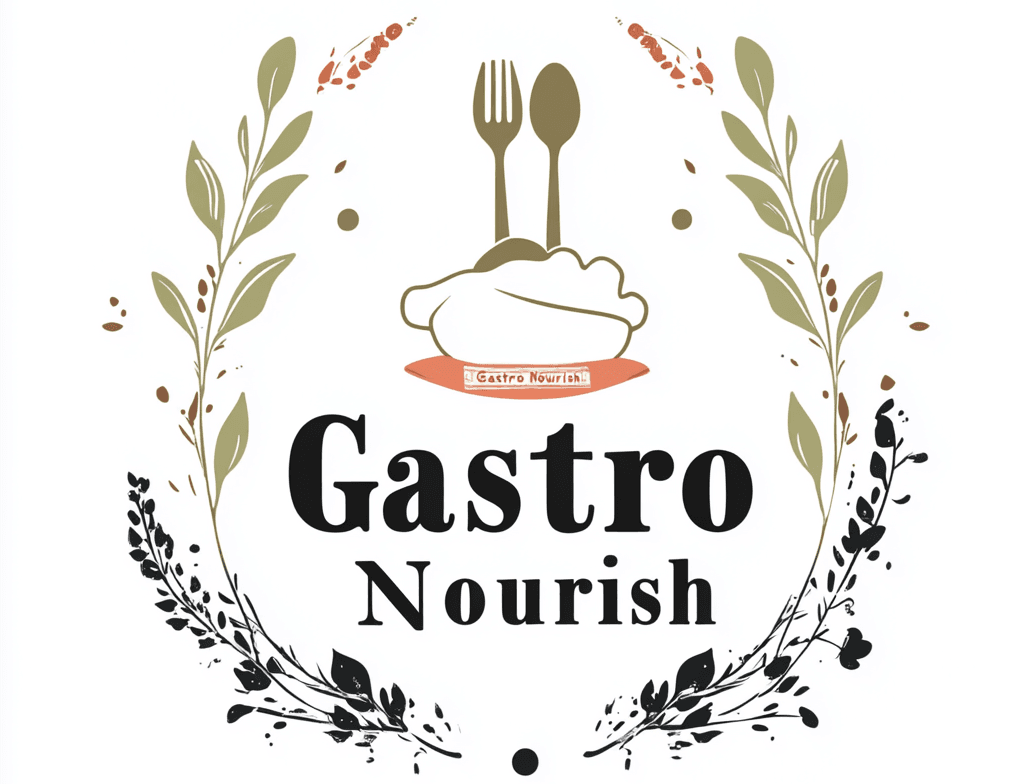Can I Buy Gluten-Free Couscous?
In today’s world, where dietary preferences and restrictions are more common than ever, many people are on the lookout for gluten-free options. One question that often pops up is, “Can I buy gluten-free couscous?” Couscous, a staple in many cuisines, is traditionally made from wheat, which means it contains gluten. However, with the rise of gluten-free diets, alternatives are becoming increasingly available. In this article, we’ll explore what couscous is, the implications of gluten in our diets, and whether you can find gluten-free versions of this beloved dish. Let’s dive in!
Introduction
1.1 What is Couscous?
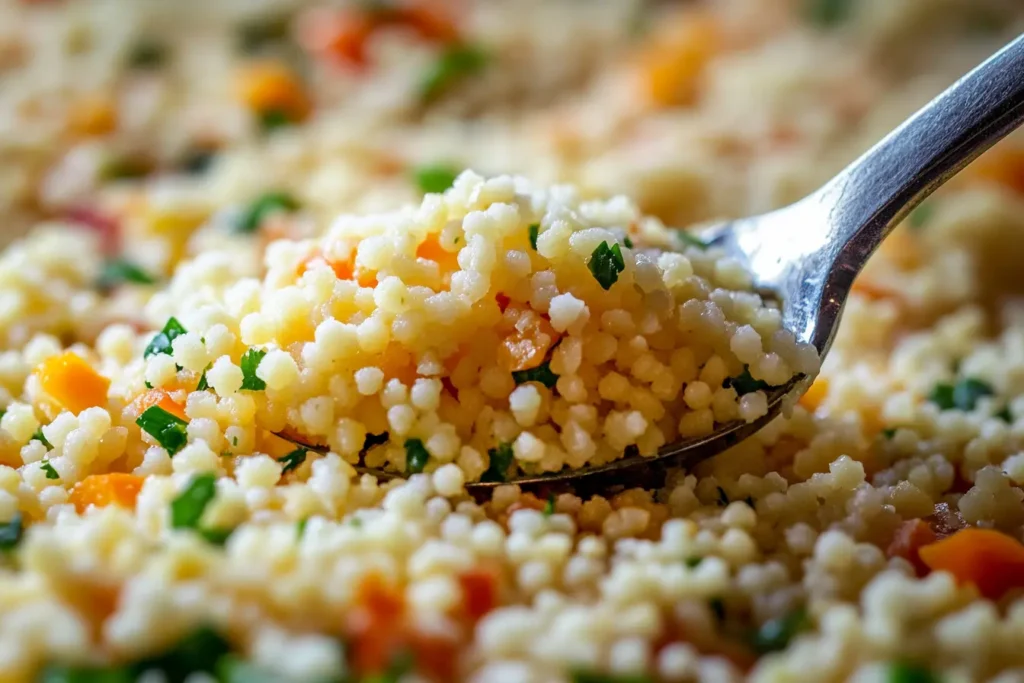
Couscous is a tiny pasta made from semolina wheat, and it’s a staple in North African cuisine. Often served as a side dish or base for stews, couscous has a light, fluffy texture that makes it incredibly versatile. You can dress it up with spices, vegetables, or proteins, making it a favorite for many home cooks. However, because it’s made from wheat, traditional couscous isn’t suitable for those with gluten intolerance or celiac disease.
1.2 The Rise of Gluten-Free Diets
In recent years, there’s been a significant shift towards gluten-free diets. Many people are discovering that they feel better when they eliminate gluten from their meals. Whether it’s due to celiac disease, gluten sensitivity, or simply a desire for healthier eating, the demand for gluten-free products has skyrocketed. As a result, food manufacturers are stepping up to the plate, offering a variety of gluten-free alternatives, including couscous.
So, can you buy gluten-free couscous? The answer is yes! But let’s dig deeper into what gluten is and why it matters, as well as the options available for those looking to enjoy this delicious dish without the gluten.
Understanding Gluten and Its Effects
2.1 What is Gluten?
Gluten is a group of proteins found in wheat and related grains like barley and rye. It’s what gives dough its elasticity and helps it rise, creating that delightful chewy texture we often associate with bread and pasta. For most people, gluten is harmless and can be part of a balanced diet. However, for those with certain health conditions, gluten can be a real troublemaker.
When someone with celiac disease consumes gluten, their immune system reacts by damaging the lining of the small intestine. This can lead to a host of unpleasant symptoms, including bloating, diarrhea, and fatigue. Even those with non-celiac gluten sensitivity can experience discomfort after eating gluten-containing foods. As a result, many individuals are opting for gluten-free alternatives to avoid these issues.
2.2 Who Should Avoid Gluten?
So, who exactly should steer clear of gluten? Primarily, individuals diagnosed with celiac disease must avoid gluten entirely. This autoimmune disorder affects about 1% of the population, and even small amounts of gluten can trigger serious health problems.
Additionally, some people may have non-celiac gluten sensitivity, which means they experience symptoms similar to those of celiac disease but without the autoimmune response. This can make it tricky to pinpoint the exact cause of their discomfort. If you suspect you might have a gluten issue, it’s always a good idea to consult with a healthcare professional for proper testing and guidance.
In light of these health concerns, the demand for gluten-free products has surged. Many people are now actively seeking out gluten-free options, including couscous. But is all couscous gluten-free? Let’s explore this further in the next section.
Is Couscous Gluten-Free?
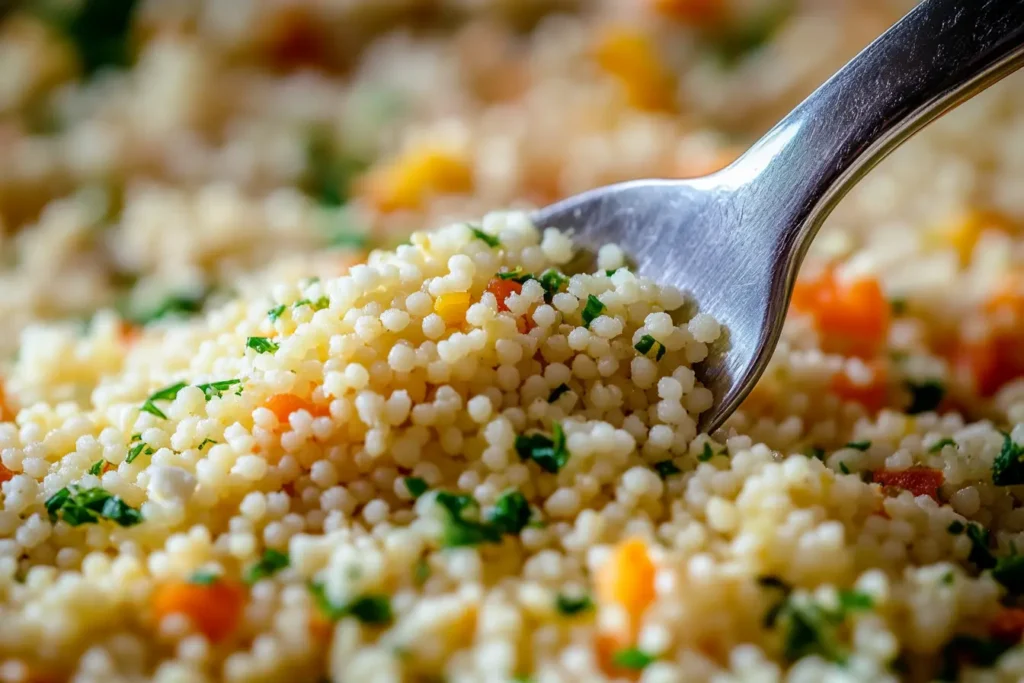
3.1 Traditional Couscous and Gluten
As we’ve established, traditional couscous is made from semolina wheat, which means it contains gluten. This makes it unsuitable for anyone with celiac disease or gluten sensitivity. When you cook traditional couscous, it absorbs water and expands, creating a fluffy texture that pairs beautifully with various dishes. However, for those avoiding gluten, this classic version is off the table.
It’s important to note that many people enjoy couscous for its versatility and ease of preparation. But if you’re gluten-sensitive, you might be wondering if there are any alternatives that can deliver the same delightful experience without the gluten. Fortunately, the answer is yes!
3.2 Gluten-Free Couscous Options
In response to the growing demand for gluten-free products, several brands have developed gluten-free couscous alternatives. These options are typically made from gluten-free grains such as quinoa, rice, or corn. They provide a similar texture and can be used in the same way as traditional couscous, making them a fantastic substitute for those looking to enjoy this dish without the gluten.
When shopping for gluten-free couscous, it’s essential to read labels carefully. Look for products specifically labeled as gluten-free to ensure they meet safety standards. Many health food stores and online retailers now offer a variety of gluten-free couscous options, making it easier than ever to find a suitable alternative.
For instance, brands like Ancient Harvest and Tinkyada offer gluten-free couscous made from quinoa and rice, respectively. These products not only cater to those with gluten sensitivities but also introduce new flavors and textures to your meals.
Now that we’ve established the availability of gluten-free couscous, let’s explore where you can buy it, both online and in local grocery stores.
Where to Buy Gluten-Free Couscous
4.1 Online Retailers
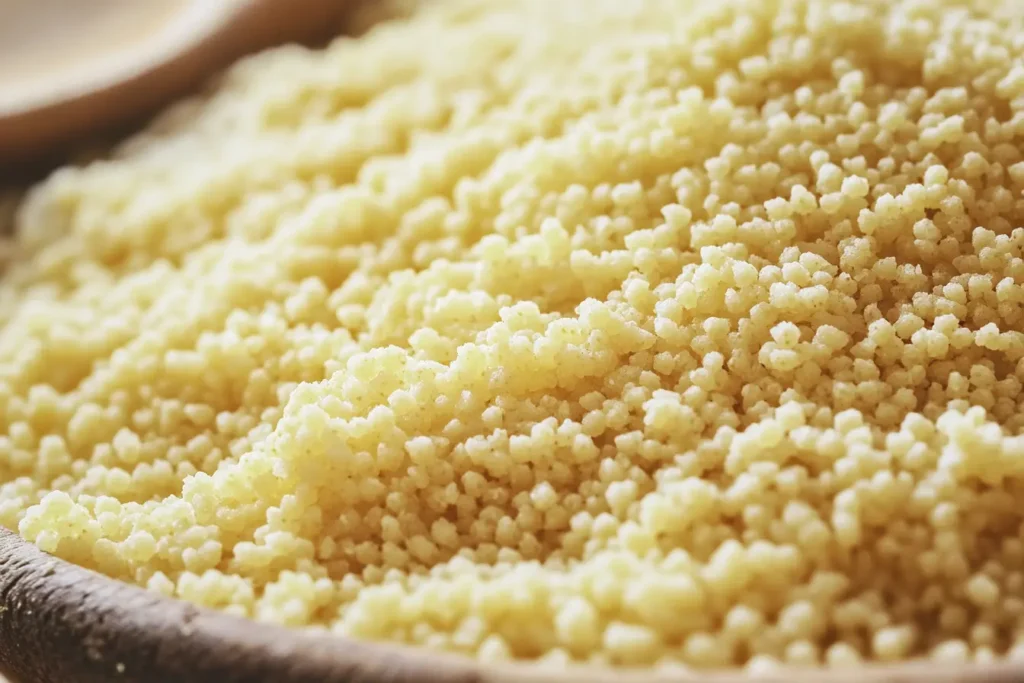
In today’s digital age, shopping for gluten-free products has never been easier, thanks to the plethora of online retailers. Websites like Amazon, Thrive Market, and Walmart offer a wide selection of gluten-free couscous options. You can browse through various brands, read customer reviews, and compare prices—all from the comfort of your home.
When purchasing online, it’s crucial to check the product descriptions and labels to ensure that the couscous is indeed gluten-free. Many retailers also provide detailed nutritional information, which can help you make informed choices. Plus, shopping online often allows you to find specialty products that may not be available in your local stores.
4.2 Local Grocery Stores
If you prefer to shop in person, many local grocery stores are stepping up their game by expanding their gluten-free sections. Stores like Whole Foods, Trader Joe’s, and even larger chains like Kroger and Safeway often carry gluten-free couscous options.
When you visit these stores, head to the health food aisle or the gluten-free section. You might find brands like Ancient Harvest or Tinkyada on the shelves. Additionally, don’t hesitate to ask store employees for assistance; they can often point you in the right direction or suggest other gluten-free products that might interest you.
Moreover, local health food stores or specialty shops may offer unique gluten-free couscous options that you won’t find in larger chains. Exploring these smaller stores can lead to discovering new brands and flavors that cater to your dietary needs.
Now that you know where to find gluten-free couscous, let’s move on to how to cook it. Cooking gluten-free couscous can be just as simple and delicious as the traditional version, and we’ll share some tips and recipe ideas in the next section.
How to Cook Gluten-Free Couscous
5.1 Cooking Techniques
Cooking gluten-free couscous is a breeze, and it can be just as satisfying as traditional couscous. The cooking method may vary slightly depending on the type of gluten-free couscous you choose, but the general process remains similar. Here’s a simple guide to get you started:
- Measure the Couscous: Start by measuring out the desired amount of gluten-free couscous. A typical serving is about 1/2 cup per person.
- Boil Water: In a saucepan, bring water to a boil. The ratio is usually 1 cup of water for every 1 cup of couscous, but check the package instructions for specific ratios.
- Add the Couscous: Once the water is boiling, remove it from heat and stir in the couscous. Cover the pot with a lid and let it sit for about 5-10 minutes, allowing the couscous to absorb the water.
- Fluff with a Fork: After the couscous has absorbed the water, use a fork to fluff it up. This will help separate the grains and give it that light, airy texture.
- Season to Taste: Finally, add your favorite seasonings, such as olive oil, lemon juice, herbs, or spices, to enhance the flavor.
This method works well for most gluten-free couscous varieties, whether made from quinoa, rice, or other gluten-free grains.
5.2 Recipe Ideas
Now that you know how to cook gluten-free couscous, let’s explore some delicious recipe ideas to inspire your culinary adventures:
- Mediterranean Couscous Salad: Combine cooked gluten-free couscous with diced cucumbers, cherry tomatoes, red onion, olives, and feta cheese. Drizzle with olive oil and lemon juice for a refreshing salad.
- Couscous Stir-Fry: Sauté your favorite vegetables, such as bell peppers, broccoli, and carrots, in a pan. Add cooked gluten-free couscous and a splash of soy sauce or tamari for a quick and tasty meal.
- Couscous with Roasted Vegetables: Toss seasonal vegetables like zucchini, eggplant, and bell peppers with olive oil and roast them in the oven. Serve them over a bed of gluten-free couscous for a hearty dish.
These recipes are not only easy to prepare but also allow you to experiment with different flavors and ingredients. The versatility of gluten-free couscous makes it a fantastic addition to your meal rotation.
With cooking techniques and recipe ideas in hand, let’s move on to the nutritional benefits of gluten-free couscous in the next section. Understanding its health advantages can help you make informed choices about incorporating it into your diet.
Nutritional Benefits of Gluten-Free Couscous
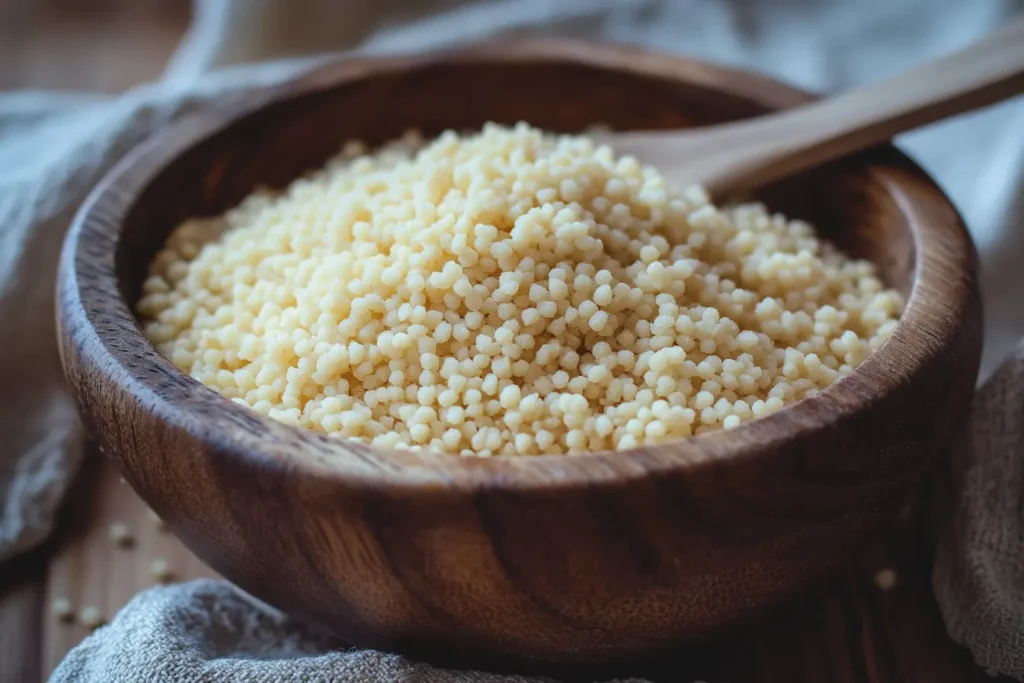
6.1 Comparison with Traditional Couscous
When it comes to nutrition, gluten-free couscous can vary depending on the base ingredient used. Traditional couscous, made from semolina wheat, is relatively low in fat and provides a good source of carbohydrates, making it a popular choice for energy. However, it lacks some essential nutrients that can be found in gluten-free alternatives.
Gluten-free couscous made from quinoa, for instance, is not only gluten-free but also a complete protein, meaning it contains all nine essential amino acids. This makes it an excellent choice for vegetarians and vegans looking to boost their protein intake. Additionally, quinoa is rich in fiber, vitamins, and minerals, which can contribute to overall health.
On the other hand, gluten-free couscous made from rice or corn may not offer the same protein content but can still be a good source of carbohydrates and energy. It’s essential to read the nutritional labels to understand the specific benefits of the gluten-free couscous you choose.
6.2 Health Benefits of Gluten-Free Grains
Incorporating gluten-free couscous into your diet can provide several health benefits, especially if you’re avoiding gluten for health reasons. Here are some advantages to consider:
- Improved Digestion: Many gluten-free grains are easier to digest than their gluten-containing counterparts. This can lead to less bloating and discomfort for those with gluten sensitivities.
- Increased Nutrient Intake: Gluten-free grains often come packed with essential nutrients. For example, quinoa is high in magnesium, iron, and B vitamins, which are crucial for energy production and overall health.
- Weight Management: Gluten-free couscous can be a part of a balanced diet that supports weight management. When combined with vegetables and lean proteins, it can create satisfying meals that keep you full longer.
- Versatility in Cooking: Gluten-free couscous can be used in various dishes, from salads to stir-fries, making it easy to incorporate into your meals without feeling restricted.
By choosing gluten-free couscous, you’re not only enjoying a delicious alternative but also reaping the health benefits that come with it. Now that we’ve covered the nutritional aspects, let’s move on to a more personal touch—my experience with gluten-free couscous. In the next section, I’ll share my journey and how this alternative has fit into my life.
Personal Experience
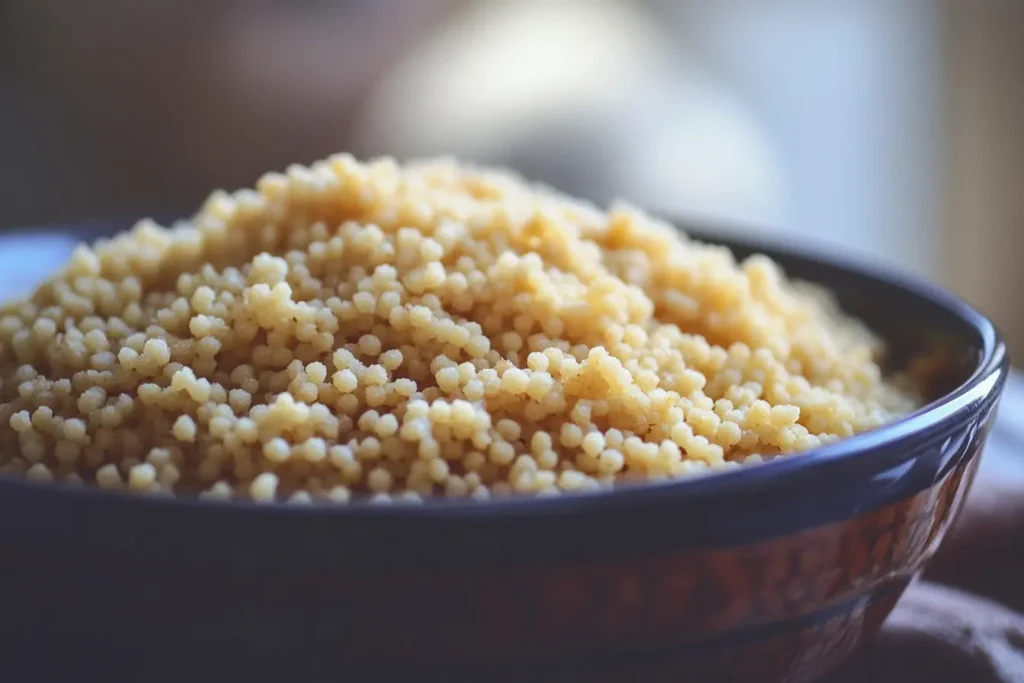
7.1 My Journey with Gluten-Free Couscous
Navigating a gluten-free lifestyle can be quite the adventure, and my journey with gluten-free couscous has been no exception. A few years ago, I started experiencing some uncomfortable symptoms that led me to explore the possibility of gluten sensitivity. After consulting with my doctor and undergoing some tests, I decided to eliminate gluten from my diet. Initially, I felt overwhelmed by the thought of giving up so many of my favorite foods, especially pasta and couscous.
The first time I stumbled upon gluten-free couscous at my local health food store was a memorable moment. Skeptical yet excited, I picked up a box of quinoa-based couscous, eager to see how it would turn out. Following the cooking instructions, I prepared it as a side dish for a Mediterranean-inspired meal. To my surprise, it was delicious! The texture was light and fluffy, and it absorbed the flavors of the spices and vegetables beautifully.
Discovering Versatility
Since that first experience, gluten-free couscous has become a staple in my kitchen. I love how versatile gluten-free couscous is; I can whip up a quick salad for lunch or use it as a base for a hearty dinner. One of my favorite recipes is a roasted vegetable couscous bowl. In this dish, I toss in whatever seasonal veggies I have on hand, drizzle some olive oil, and add a sprinkle of feta cheese. It’s not only satisfying but also packed with nutrients.
Embracing a New Lifestyle
What I appreciate most about gluten-free couscous is that it allows me to enjoy meals without feeling deprived. This fantastic alternative fits seamlessly into my lifestyle, and I’m grateful for the variety it brings to my plate. If you’re considering trying gluten-free couscous, I wholeheartedly encourage you to give it a shot. You might just find a new favorite dish!
With my personal experience in mind, let’s move on to the frequently asked questions about gluten-free couscous. In the next section, we’ll address some common queries that many people have regarding this topic.
FAQs
8.1 Can I buy gluten-free couscous in stores?
Absolutely! Many grocery stores now carry gluten-free couscous options. You can find them in the health food aisle or the gluten-free section of larger chains like Whole Foods, Trader Joe’s, and even local supermarkets. Additionally, specialty health food stores often have a variety of gluten-free products, including couscous made from quinoa or rice. Always check the labels to ensure the product is certified gluten-free.
8.2 What brands offer gluten-free couscous?
Several brands have stepped up to provide gluten-free couscous alternatives. Some popular options include Ancient Harvest, which offers quinoa-based couscous, and Tinkyada, known for its rice-based couscous. These brands are widely available online and in health food stores. When shopping, look for products specifically labeled as gluten-free to ensure they meet safety standards.
8.3 How do I know if couscous is gluten-free?
To determine if couscous is gluten-free, always check the packaging. Look for a gluten-free label or certification, which indicates that the product has been tested and meets gluten-free standards. If you’re unsure, it’s best to avoid traditional couscous made from semolina wheat, as it contains gluten. Instead, opt for gluten-free alternatives made from grains like quinoa, rice, or corn.
With these FAQs addressed, you should have a clearer understanding of gluten-free couscous and how it fits into a gluten-free diet. Now, let’s wrap up our discussion with a conclusion that summarizes the key points we’ve covered.
Conclusion
9.1 Summary of Key Points
In this article, we’ve explored the world of gluten-free couscous, starting with what couscous is and the implications of gluten in our diets. Traditional couscous, made from semolina wheat, is not suitable for those with gluten sensitivities or celiac disease. However, the good news is that gluten-free alternatives are widely available, made from grains like quinoa and rice.
We discussed where to find gluten-free couscous, both online and in local grocery stores, making it easier than ever to incorporate this versatile ingredient into your meals. Cooking gluten-free couscous is straightforward, and we shared some delicious recipe ideas to inspire your culinary creativity. Additionally, we highlighted the nutritional benefits of gluten-free couscous, emphasizing its potential to enhance your diet.
9.2 Final Thoughts on Gluten-Free Couscous
As someone who has embraced a gluten-free lifestyle, I can attest to the joy of discovering gluten-free couscous. It not only allows me to enjoy a beloved dish without the worry of gluten but also opens up a world of culinary possibilities. Whether you’re gluten-sensitive or simply looking to explore new grains, gluten-free couscous is a fantastic option to consider.
So, the next time you find yourself asking, “Can I buy gluten-free couscous?” remember that the answer is a resounding yes! With a little exploration, you can find delicious gluten-free couscous options that fit seamlessly into your meals. Happy cooking!
